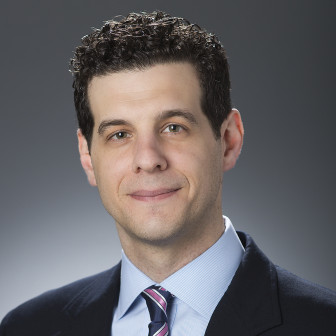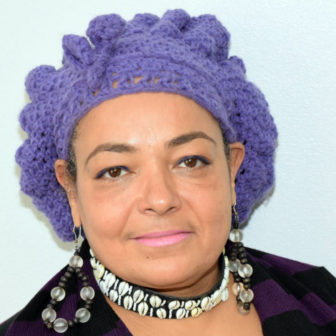As the coronavirus began spreading in the United States, and grassroots youth activists got wind of the enormous risks as well as the precautions needed to protect people — social distancing, masks, frequent cleansing — they began to take action.
Parents and advocates created car parades at statehouses and courts. Advocates for youth started pressing insiders to begin releasing juveniles at risk of COVID-19. And lawsuits were filed to get youth out of locked facilities.
It was largely a grassroots effort, led by people like Jeannette Bocanegra-Simon, the executive director of Justice for Families. But it was a big push. Parents of locked-up youth wanted them home, and safe, so they rallied in front of the most powerful state institutions across the country.

Liz Ryan
State officials can’t say they “didn’t know about it,” said Liz Ryan, head of the Youth First Initiative. “‘Whoa, that letter got lost in my mailbox or is on my desk.’ You know, they [activists] escalated efforts and they were very clear and very public that they [youth] needed to be released.”
In fact, as early as March 30, the National Governors Association Executive Director Bill McBride issued a memorandum to all 50 governors, warning that "Incarcerated populations may be at higher risk for contracting COVID-19 as the virus can spread quickly in enclosed spaces, including detention centers, prisons, and jails. In these settings, youth may be limited in their ability to participate in proactive measures to keep themselves safe, such as social distancing and frequently washing hands."
With some exceptions, little happened at the state level then. But what did happen was that many counties and cities issued statements and orders to, among other things, increase testing in facilities for staff and detained youth, and halt court proceedings, or suspend arrests and intakes to protect minors against the pandemic.
The result was a drop of at least 24% in juvenile detention populations and a 29% reduction in intakes in about two weeks in late March at the local and county levels. That plummet equaled the seven-year stretch between 2010 and 2017, according to a survey by the Annie E. Casey Foundation put out April 23. (For the month of May, data is still being analyzed by the foundation.)
The response from states
So what about the state executive, legislative and judicial branches, which oversee or run juvenile prisons? Have they done enough to deliver on similar protections for incarcerated youth?
A critical report by the Youth First Initiative puts it bluntly: No.
In fact, advocates say a look at every state shows that very little has been done to release youth behind the walls of juvenile prisons during the health crisis.
"We haven't seen that chain reaction at the state level,” Ryan said. She qualified that by adding that states haven’t exactly been transparent with data, so they had to rely on public reports through official news releases, data reports and other information on the sites of governors, courts and juvenile justice administrations.
Still, she said, “This is really irresponsible of state officials to take such limited action here.”
At least 488 youth and 580 staff across the country had tested positive for the virus as of Tuesday, according to The Sentencing Project.
"Despite these alarming rates of infection in youth prisons and juvenile detention facilities,” the Youth First Initiative report says, "and a nationwide call to action, state juvenile justice agencies, courts, and policy makers have not gone far enough to prevent or fully control the spread of COVID-19 among youth."

Joshua Rovner
But even The Sentencing Project’s numbers could be very low, cautioned Josh Rovner, a senior advocacy associate with the project who has been collecting and analyzing the data daily. The numbers are for all facilities — detention and youth prison — and he, like Ryan, can only rely on data made public so far.
“I get scraps of information,” Rovner said. So, in nearly every case, the numbers given are the conservative estimates in his database to ensure he’s not overcounting. This means the lack of available data, plus the dearth of widespread testing across the states, means the number is likely higher. And possibly by a lot.
“I don’t intend to come up with any excuses for the agencies who saw this coming and knew quite well who was in their facilities — overwhelmingly kids who are charged or sentenced for low-level offenses or violating terms of their probation,” Rovner said. “They knew that, and the idea that advocates had to remind them of that is preposterous … This is something that the agencies and the states knew was coming, and they did not do enough to protect the kids they are tasked with protecting.”
The 10 activist states
A lot of focus has been on New Jersey, where state Attorney General Gurbir Grewal issued an order to test every minor in state and local or county custody for the coronavirus. Of the roughly 280 juveniles locked up in New Jersey, at least 273 have tested there so far, with 28 positive.
In Colorado, Gov. Jarid Polis issued an order on April 11 that, among other things, dramatically reduced the authority of juvenile services with parole on the juvenile side, except in certain cases like violent crimes. The order also applies to intake of juveniles, meaning fewer youth would enter facilities, while releases could happen on a case-by-case basis.
"The potential spread of COVID-19 in State facilities poses a significant threat to individuals and staff in those facilities, as well as the communities to which those individuals will return,” Polis said in the order.
At the time of the Youth First report on May 8, such action in Colorado resulted in a 22% decrease in the state’s incarcerated youth population.
In Michigan, Gov. Gretchen Whitmer issued an "executive order [that] strongly encouraged local detention facilities to release youth unless they are a ‘substantial and immediate safety risk to others,’” according to the report. An extension followed.
Illinois, Maine, Maryland, Oklahoma, North Carolina and Virginia also took action to release youth, according to the report and state documents. Youth First Initiative found, through press reports, that Georgia also took action. (Some of the reduction in that state took place in Clayton County, where Judge Steven Teske issued strict guidelines that resulted in a roughly 90% drop in locked-up youth.)
Families, advocates and juvenile defenders applaud these actions. But that’s just 10 states. Elsewhere in the country, according to Ryan, not much has happened — at least publicly. Even in the states that have taken action, she said, it’s been minimal.
“I don’t want to overstate what any state has done,” she said. “No state has done what’s needed. No state. So, it’s not like anyone deserves a standing ovation."
Why? Because even in the states that have taken some action, the reduction in incarcerated youth populations across the country has barely moved the needle on the 60,000 juveniles in jail or prison, as estimated by the ACLU. (The federal Office of Juvenile Justice and Delinquency Prevention estimates the population at about 43,000.)
“It’s devastating,” said Jessica Feierman, senior managing director at the Juvenile Law Center. "The states had an opportunity to get out in front of this problem. And they didn’t do that, so young people are now suffering as a result. And it’s heartbreaking to see young people back in confinement in unsafe conditions when they could be going home and be safe with their families.”
(The Coalition for Juvenile Justice released a spreadsheet of state responses and policies.)
Why are many states so slow to act?
"We know that many of these officials are hiding behind the CDC guidance — the CDC interim guidance on detention and correctional facilities,” said Ryan, referring to the Centers for Disease Control and Prevention. "In my conversations with the CDC officials who are working on this guidance, they acknowledge that even if a facility follows that guidance, it wouldn’t stop an outbreak.”

AECF
Nate Balis
Some of the slow state action may be attributed to what Nate Balis of the Annie E. Casey Foundation said was the setup of different systems — each with their own laws governing juvenile justice, meaning different agencies are responsible for the intake and release of youth.
“As the report lays out, there are a lot of players,” said Balis, director of the foundation's Juvenile Justice Strategy Group. “It’s not just the juvenile justice agencies who [advocates] are calling on, but also governors, also judges, depending on the state. Who has the authority to release? So I think that's part of why we see that the speed at which young people are being released from facilities isn’t matching the decline in admission.”
Balis doesn’t excuse the situation, but he likens it to a bathtub: “It's a lot easier to unclog the drain and get the water out when there's no new water coming into the tub. And that's the spot that these systems all find themselves in.”
The difference in what is being seen at the local and county level versus the state level can also be tied to how closely they have contact with police in the process, he said. Police make arrests in the communities, which are referred to the local legal system, which could send youths to detention or prison (depending on the crime), or back home.
And if orders are in place to slash arrests or intakes of juveniles, “local detention numbers are going to be much more sensitive to those changes,” Balis said. "State correctional populations with young people who are sometimes staying for many months or several years are going to be less automatically impacted by changes in arrests that are happening in the community.”
Change at the higher level, in state correctional facilities for juveniles, requires explicit action — by a governor, a state juvenile justice authority, a court or another agency like probation that oversees those operations.
“Someone has to act in order for it to happen,” Balis said. "And without that, young people can easily get stuck."
While juvenile state intakes have certainly taken a dive during the pandemic, releases have been slow — meaning populations are not decreasing to levels that advocates would consider safe.
In an issue brief by the Council of Juvenile Justice Administrators in May, the council wrote: "By early April 2020, most state juvenile facilities had temporarily suspended admissions. Another factor contributing to recent declines in facility populations is juvenile justice agencies and courts have discontinued the widespread practice of incarcerating youth for technical violations of probation, parole, or other community supervision. Juvenile facilities still accepting new admissions report that all new intakes are subject to a 14-day quarantine.”
Ryan listed four chief reasons she calls excuses for why she believes states have been slow to act. Chief among them: “Young people in the justice system are a low priority for them,” something she believes underscores the nation’s inability to shake the legacy of slavery since the white to nonwhite disparity in youth facilities — much like the adult system — is wide, at about 66% black or brown. (Other statistics show that black and brown youth are 5 times more likely than whites to be incarcerated.)
Others include the CDC guidance, which officials say they’re following, that kids are better off and safer locked up, and one "legitimate concern but not an adequate barrier.” That is the states’ lack of adequate plans to ensure a safe transition back into communities and kids’ homes, including delays in getting Medicaid transferred to them post-release.
“Especially during this pandemic, there's a concern that kids could be released without adequate support,” Ryan said.
Locked-up youth can’t protect themselves
Why are the families and advocates so urgent about this? Simple, according to an emergency petition filed in Pennsylvania Supreme Court by the Juvenile Law Center, the Youth Sentencing & Reentry Project and DLA Piper.
The petition, filed April 1 but denied just days later, sought the release of about 2,000 youth in Pennsylvania detention centers, as well as jails and prisons. The law center pointed to the declaration of Dr. Julie DeAn Graves.
In it, Graves testified that “There is no question that requiring children to remain detained in congregate care facilities is more dangerous than the travel required to release children to their homes. While there is level of risk in traveling at this time, the risk of exposure in congregate care environments is much higher ... These children are at risk every single time a staff member or visitor walks into the facility — because any one of them could be an asymptomatic carrier of COVID-19. Even if juvenile and criminal justice facilities faithfully adhere to screening protocols to minimize the risk of transmission, there is still the risk,” of staff being asymptomatic and spreading the virus throughout facilities.
Noting that locked-up youth have little access to testing, soap or sanitizer, and no ability to social distance except in solitary, Graves added:
"If we are to contain the spread of the COVID-19 virus, we must relocate as many people as possible out of congregate settings. If we prevent people from practicing adequate physical distancing from others and the other steps outlined above, institutional centers will become clusters in which high percentages of persons are infected with COVID-19. Such clusters not only endanger those who are immediately infected, but the health of those residing in the communities in which congregate facilities are located.”

Jeannette Bocanegra-Simon
This is precisely why Bocanegra-Simon mobilized her organization to help wage a campaign for the release of juveniles.
"Much of what I've heard and spoken about with other folks is how so many of our loved ones are getting these symptoms from the virus and are getting sick,” she said. “And not getting proper materials like face masks and enough testing."
One of Bocanegra-Simon's big concerns matches Ryan’s about adequately preparing youth to return home. But just as worrisome is the idea of not doing it — and placing kids in solitary who have tested positive before returning to a new environment at home that has vastly changed from what they knew before the coronavirus hit.
"They’re coming back from a traumatic environment to where now, you know, this,” Bocanegra-Simon said. But for those inside, the scare of COVID-19 is more acute, she said.
"I’m a parent,” said Bocanegra-Simon, who also suffered a bout with symptoms of the virus along with her husband. “And as parents, we’d get up in the middle of the night to make sure that your child is okay. If he needs anything, or she needs anything — an extra blanket, an aspirin, anything — you’re there to make it better, right? And I think about these young [detained] kids who are so, so delicate right now, during this development stage, and not having a family member or someone who cares when they’re not feeling well, or they need some answers.”
All the more reason to energize such campaigns for change at the top, advocates say. There’s been some success. And even in those states that have budged, people in the fight with Bocanegra-Simon wonder if that change will stick, they say.
Do even small reductions offer chance for change?
Every expert interviewed is wondering if local, county and state officials will use the space opened up by the pandemic to rethink juvenile justice in its entirety. Ryan strongly believes that the juvenile justice system is built on paternalism, that the system feels it knows better than families and communities how to care for a child.
Statistics show that 70% of locked-up kids are in detention or prison for nonviolent offenses. Advocates believe community-based alternatives to detention and prison are called for, particularly given the enormous risks and lethality associated with this pandemic.
New findings are showing youth at a much higher risk than previously thought as the virus changes, and new strains target minors with dangerous inflammatory illnesses. COVID-19 is revealing itself to be even more dangerous than initially thought.
“The juvenile justice system rips kids away from their families,” Ryan said. "The juvenile justice system breaks apart families and ignores what the research shows about the most important relationships that kids have in their lives — their family members and their parents and other caring adults. The system breaks those ties with people. The science says that’s wrong.”
Although strides have been made to change the juvenile system over the years — including recent raise the age laws and huge drops in intakes since 2000 that have drawn down the juvenile population by 60% — it remains "a 200-year-old model, a model created when enslaving people was [legal],” Ryan said.
"We're the only country in the world that has not signed on to the Convention on the Rights of the Child,” she said. "We're the only country in the world that routinely puts kids in prisons, routinely prosecutes kids in adult criminal court and send those kids to die in prison. We are the worst in the world, in juvenile justice — the worst. So, we have a long way to go to change that. But I think right now is an opportunity for us to take steps in the right direction."
With many states not publicly releasing figures on released youth amid the ongoing pandemic, it’s difficult to say how many have been allowed to return to their families and communities. Hundreds? Thousands? Right now, it’s anybody’s guess.
The Youth First Initiative report states: "While there has been much (needed) attention paid to the spread of infection in adult jails and prisons, far too little is known about the efforts across the country by state and local correctional agencies to control the spread of COVID-19 in youth prisons or the efforts to release incarcerated youth.”
(The Marshall Project, for example, collects data daily on cases and deaths, but only in state and federal prisons.)
What is known on the juvenile front is that justice officials, advocates, governors and other stakeholders — particularly families — have an opening to think hard about how justice for youth should look going forward in this country, advocates and families say.
Bocanegra-Simon's youngest son was in the New York youth system until he turned 21 in 2016 after a series of legal run-ins that began when a high school officer got involved in a fight between students over $2.
Stuck in a legal system she didn’t understand, the worst outcome she could think of for her son — detention, then the in-and-out cycle of crime and punishment — followed.
Quickly, she saw in her home and elsewhere how much money was going to fund prisons, especially those for youth, compared with dollars for education and community-based alternatives to incarceration. It made her head spin. She took action, helping to marshal families and communities impacted by youth justice around the country to lobby for changes to the system.
“We’ve got to continue doing it,” she said. “Shutting down juvenile prisons and investing in education, investing in communities. And you know, we talk about the racial disparities, but when it comes to a mom or parents, we all want the same thing. Nothing different. You know, no matter what language we speak, or where we come from, we love and every parent wants the best for their child ... Nothing different.
After all, she said, "that’s what the juvenile justice does. It prepares young kids to go to the adult system. Right?”
Balis adds to this line of thought.
“We have a tremendous opportunity at this moment,” he said, "to define what we want juvenile justice to look like in the future. Juvenile justice should be community-centered. That should be focused on supporting young people, not surveilling them and not incarcerating them."
The door is pushed open further, he said, by the fact that the pandemic-pressured economic downturn is taking a toll on state budgets. So state officials will have to make hard decisions on how to handle the money they do have.
At a time when juvenile crime, even before the current health crisis, had dropped to levels not seen in 60 years, Balis said the time is now “to use this opportunity to get the populations down in state custody and help shape what juvenile justice becomes not just during the pandemic, but afterwards as well.”
This story has been updated.
